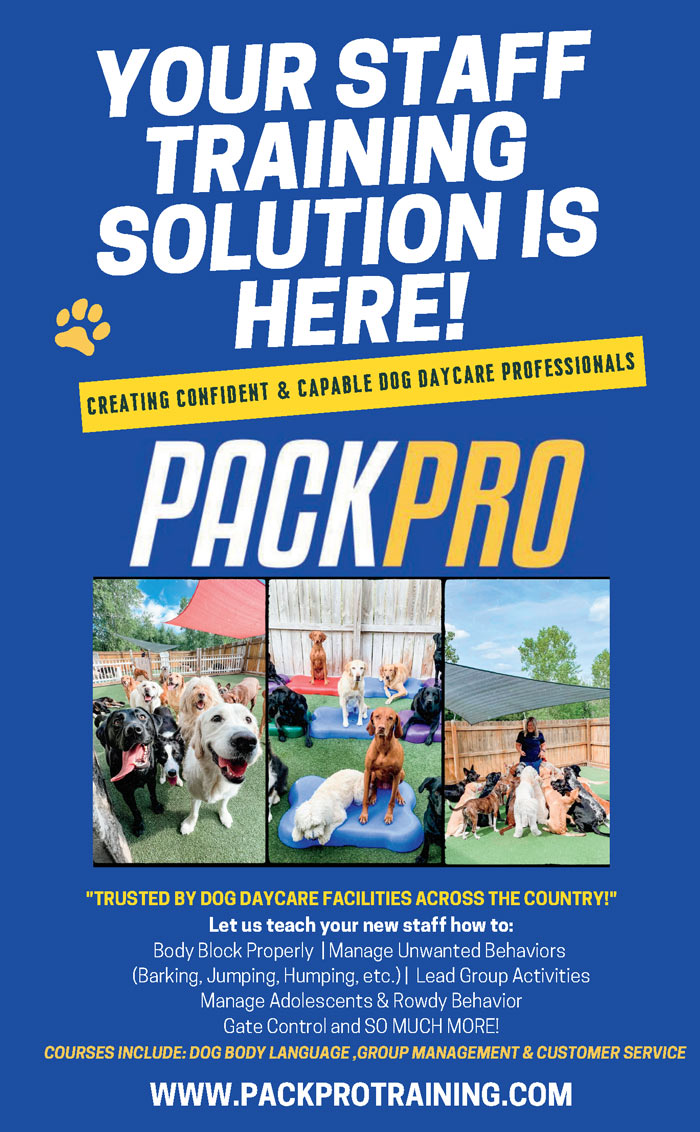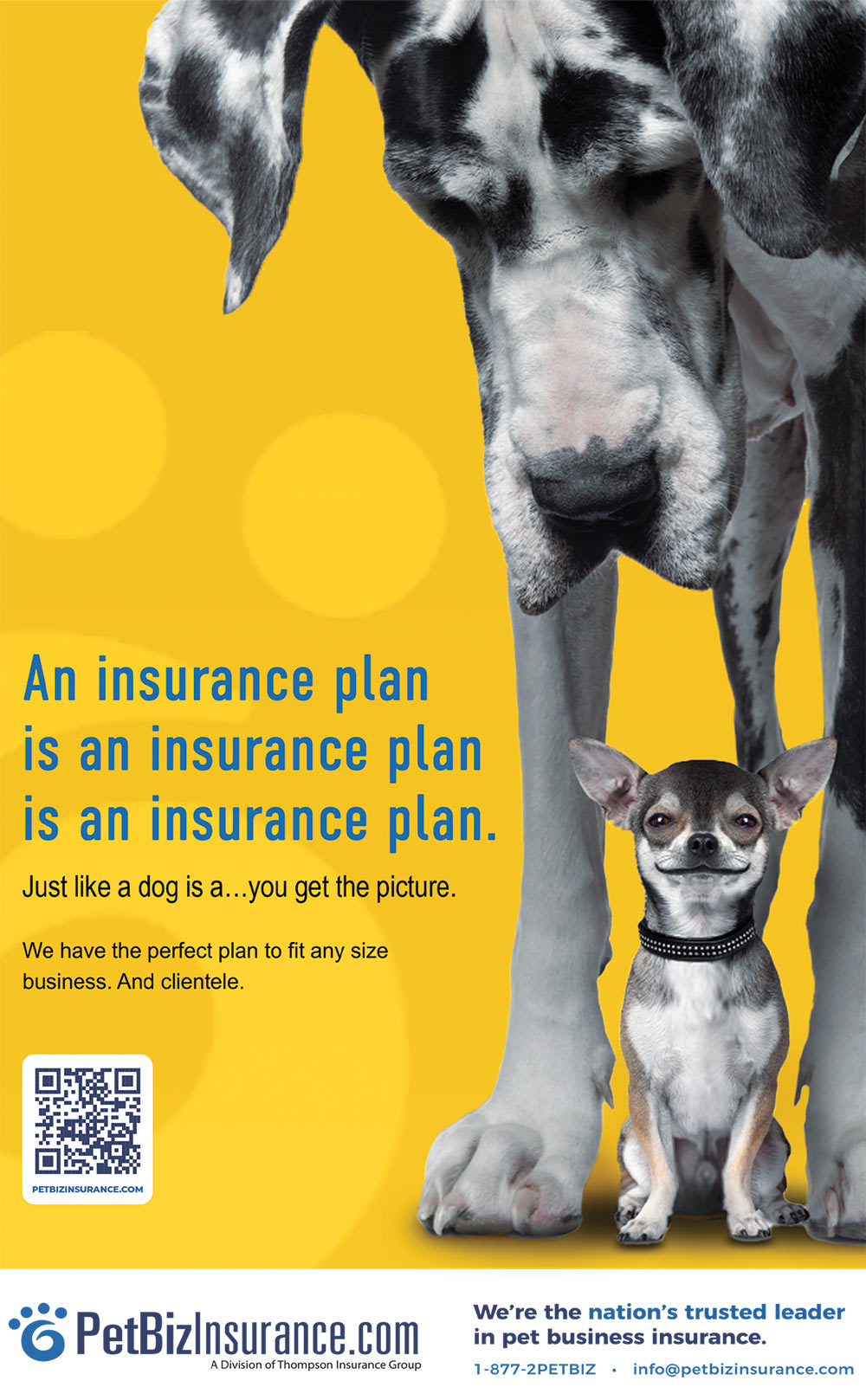
 o matter how diligent and proactive your facility might be, there is always a chance of an outbreak of disease or illness. The increase in dog socialization between daycares, playdates and dog parks is significant, and not every dog that comes into contact with your clients’ dogs will be properly vaccinated. If there is an outbreak of canine respiratory illness in your community, it’s almost impossible to prevent it from reaching your facility.
o matter how diligent and proactive your facility might be, there is always a chance of an outbreak of disease or illness. The increase in dog socialization between daycares, playdates and dog parks is significant, and not every dog that comes into contact with your clients’ dogs will be properly vaccinated. If there is an outbreak of canine respiratory illness in your community, it’s almost impossible to prevent it from reaching your facility.
Many clients follow a Bordetella vaccination schedule every six months, but this is not enough of a precautionary measure. The Bordetella vaccine itself does not protect a dog from all strains of respiratory disease. However, facilities who required the Bivalent Canine Influenza vaccine prior to a Canine Infectious Respiratory Disease (CIRDC) outbreak in the community did not see an outbreak in their facilities. All pets who enter your facility should be required to have all the vaccinations two weeks prior to entry. Making sure your clients are up to date with all vaccinations and educating them on the ones that are not always offered upfront by the vet are great ways to be proactive against a CIRDC outbreak in your facility.
To get the most protection against CIRDC, the following vaccines should be included:
- DA2PP vaccine (commonly referred to as “distemper vaccine”) provides immunity against distemper, adenovirus type 2 and parainfluenza.
Please note: It is important to educate staff and pet parents that “parainfluenza” and “canine influenza” are different vaccinations.
- Bordetella vaccine provides immunity against Bordetella bronchiseptica.
- Bivalent Canine Influenza provides dual protection against Canine Influenza Viruses (H3N8 and H3N2).
Please note: It is important to distinguish the Bivalent vaccination, as not all vaccinations include both strains.
Education is also key for a successful and safe environment. Have staff training sessions and refresher courses throughout the year to keep them up to date on new and existing protocols and information. For example, one of the most important infectious disease control procedures is to have staff change clothing or wear disposable protective garments when working with sick animals.

- Isolate the dog from the other pets in your facility.
- If a separate isolation room is not available, place the symptomatic dog at a minimum of 25 feet from other pets.
- Monitor daily for developing symptoms within the pets in your facility.
- Avoid overcrowding and limit stress on the pets.
- Have an infectious disease protocol.
- Apply proper disinfectant to all surfaces routinely.
- CIRDC pathogens survive in the environment no more than a few hours (canine distemper) or up to a few weeks (Bordetella) and are inactivated by virtually all routinely used disinfectants:
- Household bleach (5% sodium hypochlorite) diluted at 1:32 (1/2 cup per gallon)
- Calcium hypochlorite
- Sodium dichloroisocyanurate
- Potassium peroxymonosulfate
- Accelerated hydrogen peroxide
- Pathogen survival can be greatly enhanced by persistent moisture in the environment.
- Surfaces should be in good repair to prevent pooling of water.
- Cleaning should be followed by thorough drying on a daily basis.
- The cleaning process needs to be as stringent as possible.
- Ideally, dogs should be held in double-sided enclosures separated by a guillotine transfer door, such that the dog can be held on one side while the other side is cleaned.
- If dogs must be removed from their enclosure for cleaning, they should not be left in a common holding enclosure, nor tied in aisle ways while contaminated water and disinfectant are sprayed nearby.
- Disinfectant should be applied via a sprayer or other application system rather than a mop and bucket, which will quickly become contaminated. If you only have the ability to use mops and buckets, make sure to use clean, disinfected mop heads for each area.
- Single-use, disposable mop heads can be purchased to use without having to purchase new equipment.
- When the use of mops is unavoidable, always use an animal-safe disinfectant spray as the final step.
- Identify the first dog in facility with symptoms (patient zero).
- Trace all the dogs in contact with patient zero.
- Make a list of the dogs who patient zero has been in contact with.
- Monitor those dogs for symptoms.
- If any of those dogs become symptomatic, trace any additional dogs they have been in contact with and so on.
- This will give you a good idea of how widespread an outbreak may become.
- Notify pet parents regarding exposure.
- Ask if their dog has been with any other dogs outside of your pet care facility, and if they are aware of those dogs experiencing illness.
- Have them observe their dog for up to five days before returning to your facility.
- If the dog becomes symptomatic, have them remain out of your facility until a veterinarian clears them to return.
- Stay in touch with your veterinary partners.
- Are they seeing an uptick in respiratory cases in their clinic?
- What are their preferred treatment protocols?
- What are their recommendations for dogs returning to your facility?
- If in-house dogs start coughing, make arrangements with a veterinarian who can see the coughing pets right away, take throat swabs to test for canine influenza and prescribe the needed medications.
- Define your infectious illness policy that outlines the following:
- Turning away coughing dogs who enter your facility;
- Recommended treatments or veterinary diagnosis confirmation;
- Required time before a dog can return to your facility.
It’s important to be forthcoming about the situation without creating a panic. Always be honest and transparent. If you try to cover up the fact that you have cases of canine respiratory illness, you only increase the likelihood of a backlash of customer outrage and will find your facility being bashed on review sites.
- Notify incoming customers.
- Call anyone scheduled to board a pet in the upcoming week and advise them that a few boarding pets have developed canine cough recently.
- If your customers feel that you have been transparent and allowed them to make the choice, you have honesty in your favor should their pets become ill later.
- Follow up with other recent boarders.
- It will help you assess the magnitude of the problem if you contact every customer who has picked up a boarding dog within the last few days.
- Treat it as a routine follow-up call, but if you learn that a dog is coughing, urge the owner to seek veterinary care.
- Coach employees on what to say.
- Avoid panic with the language they use.
- Assure customers that you are doing everything possible to safeguard the pets in your care.
- Discuss protocols you have in place to reduce the spread of the illness.
- Equate canine respiratory illness to colds and flu in people and talk about “doggy cough and cold season.”
- Provide information for pet parents on ways to prevent the spread of infection.
- Always remember that vaccines do not completely protect a dog that is exposed to CIRDC. For maximum protection of your own dogs, they should receive a mucosal Bordetella and parainfluenza vaccine at least three days and not more than one year before you bring them to a pet care resort.
- Keep dogs isolated. Some CIRDC pathogens can spread even to otherwise healthy, vaccinated pet dogs (e.g., canine influenza).
- Refrain from bringing your dog to pet stores, dog parks, obedience training or other places young puppies may visit as long as the dog is showing any signs of illness. Remember, some dogs may be infectious to others while showing only mild signs themselves.
- Dogs can continue shedding some of the infectious agents associated with CIRDC for some time after recovery. The risk is greatly reduced once all clinical signs have resolved; however, pet parents should be asked to keep their pet away from areas where animals congregate, such as dog parks or obedience classes, for at least two weeks after recovery.
- If your dog develops a hacking cough, discharge from eyes and nose, lethargy or loss of appetite, you should make an appointment with a veterinarian.
- The decision to close in response to an outbreak depends on several questions, including:
- How extensive is the outbreak in your facility? It is rare to have a large outbreak all at once. If you do not have the manpower to take necessary steps to combat an outbreak, closing temporarily will allow you the time to do so.
- Are you able to quarantine symptomatic dogs? Some facilities do not have the ability to separate sick dogs. This is an important step in reducing the spread of disease.
- Can you afford the financial loss? The financial loss can be devastating.
- Some benefits of closing include:
- Immediately stop the spreading of the disease in your facility.
- Opportunity to deep clean the entire facility at once.
- Ability to use disinfectant fogging services.
- Public relations (When an outbreak is not addressed correctly, closing can be seen by the public as you “doing everything that you can.”)




